The Indian automotive market has seen tremendous growth over the past decade. With increasing urbanization, rising disposable incomes, and evolving consumer preferences, the choice of cars in India has expanded significantly. By 2025, consumers have access to a wide variety of car types that cater to different needs, from city commuting to family travel, luxury driving, and even off-road adventures.
Understanding the different types of cars in india and their features is crucial before making a purchase decision. This article provides a detailed overview of the 7 main car body types in India, highlighting their features, advantages, disadvantages, and popular models.
Types of cars in india 2025
Also Read: Shah Rukh Khan Joins the Billionaire Club: India’s Badshah Now Worth $1.4 Billion
1. Hatchback
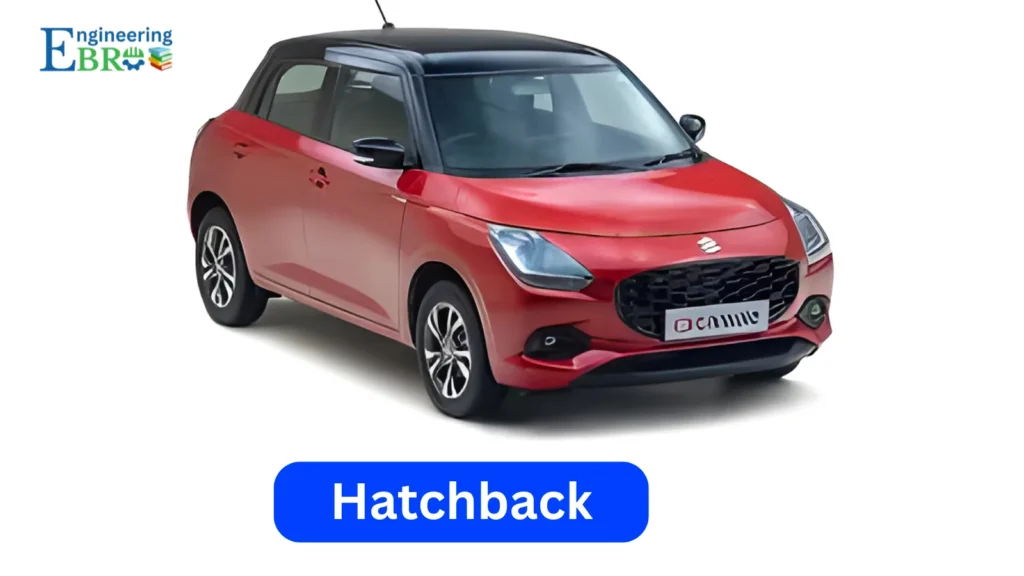
Overview
Hatchbacks are among the most popular car types in India due to their compact size, fuel efficiency, and affordability. These cars are perfect for urban environments where traffic congestion and limited parking space are common challenges. A hatchback has a rear door that swings upward, providing access to the cargo area, which is integrated with the passenger cabin.
Key features
- Compact Size: Hatchbacks are small and easy to maneuver in city traffic.
- Fuel Efficiency: Lightweight design contributes to better mileage.
- Practical Boot Space: Though smaller than sedans, the rear hatch allows flexibility in storing luggage.
- Affordability: Generally priced lower than sedans and SUVs.
Advantages
- Easy to park in tight spaces.
- Lower maintenance and insurance costs.
- Economical for daily commuting.
Disadvantages
- Limited space for long trips.
- Less powerful compared to larger car types.
- Less premium feel.
Popular Models in India
- Maruti Suzuki Swift: Known for reliability, fuel efficiency, and stylish design.
- Hyundai Grand i10 Nios: Offers modern features and comfortable seating.
- Tata Tiago: Affordable hatchback with robust build quality.
2. Sedan
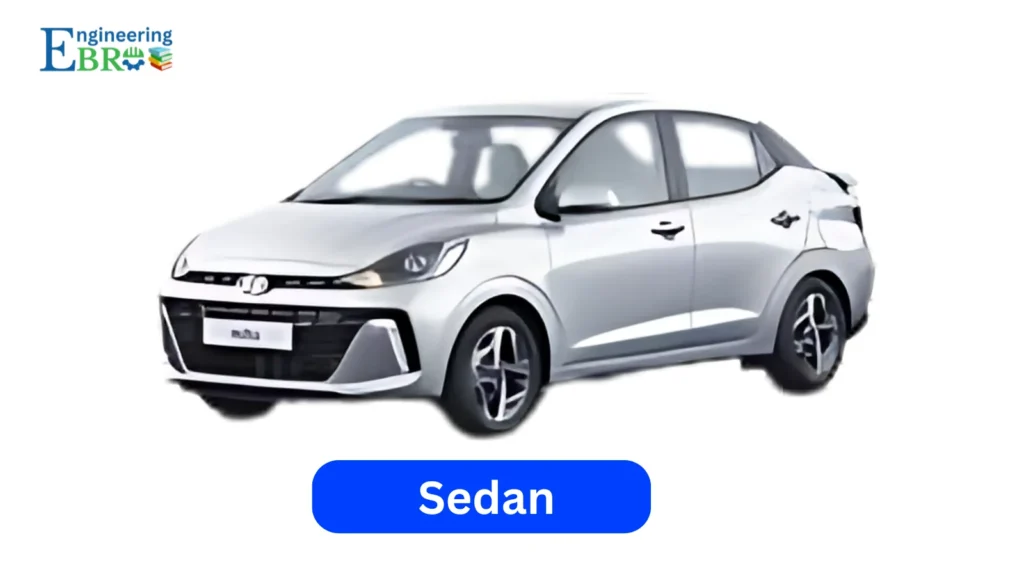
Overview
Sedans are the traditional three-box car design, featuring a separate engine compartment, passenger cabin, and boot. They are a popular choice among families and professionals due to their comfort, stability, and aesthetic appeal. Sedans generally offer a more premium experience compared to hatchbacks.
Key Features
- Spacious Interior: Comfortable seating for 4–5 passengers.
- Large Boot: Offers sufficient space for luggage.
- Smooth Ride: Designed for long-distance driving.
- Aerodynamic Design: Enhances performance and fuel efficiency.
Advantages
- Comfortable and stable ride quality.
- Good safety features.
- Suitable for highway driving and long trips.
Disadvantages
- Larger footprint, making city parking challenging.
- Higher purchase and maintenance costs compared to hatchbacks.
Popular Models in India
- Maruti Suzuki Dzire: Affordable, reliable, and fuel-efficient.
- Hyundai Aura: Offers modern features and premium looks.
- Honda Amaze: Known for smooth driving experience and engine reliability.
3. SUV (Sport Utility Vehicle)
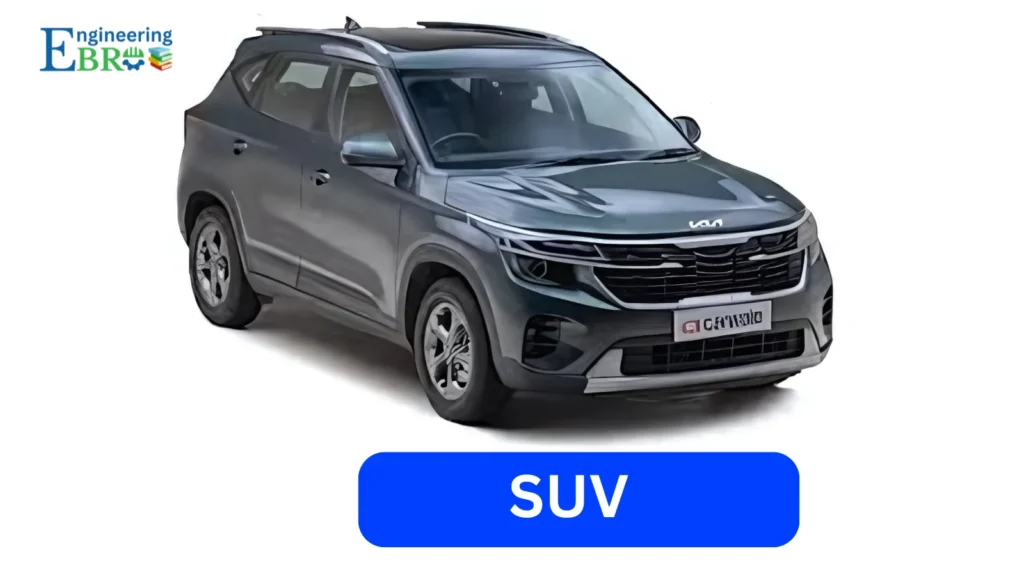
Overview
SUVs are larger vehicles designed to handle both on-road and off-road driving. They have a higher ground clearance, powerful engines, and robust suspension systems. In India, SUVs are becoming increasingly popular among families and adventure enthusiasts. They are available in various sizes, from compact SUVs to full-size variants.
Key Features
- High Ground Clearance: Allows smooth driving on rough roads and speed bumps.
- Spacious Interiors: Offers comfort for families and ample luggage space.
- Powerful Engines: Suitable for highways and off-road conditions.
- All-Wheel Drive Option: Some models come with 4×4 for enhanced off-road capabilities.
Advantages
- Can handle diverse terrains.
- Offers a commanding driving position.
- High resale value in India due to growing demand.
Disadvantages
- Higher fuel consumption.
- Expensive compared to hatchbacks and sedans.
- Larger size can be challenging in congested cities.
Popular Models in India
- Hyundai Creta: Compact SUV with premium features.
- Kia Seltos: Modern design, loaded with technology.
- Tata Harrier: Rugged SUV suitable for long drives and off-roading.
4. MUV / MPV (Multi Utility Vehicle)
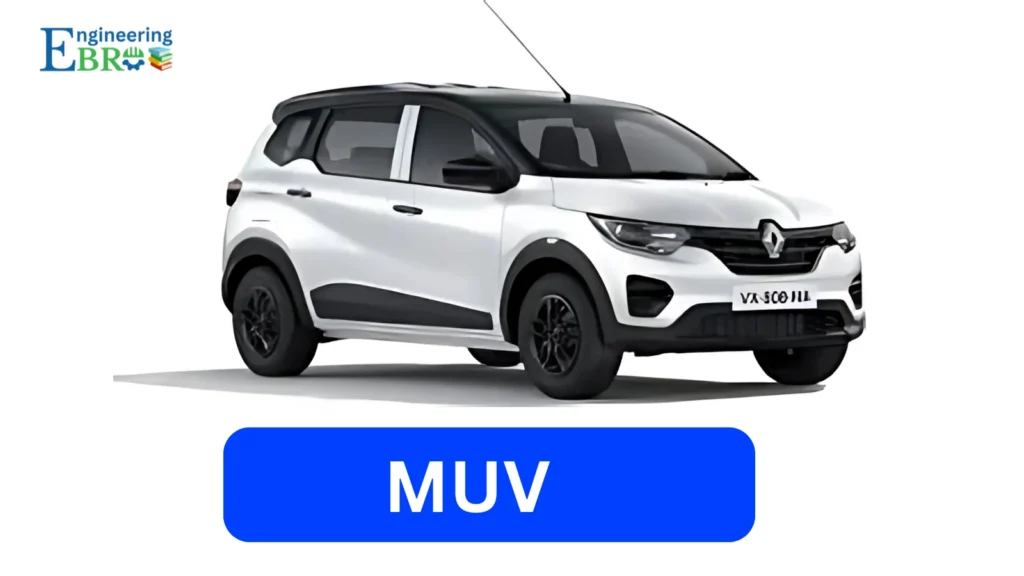
Overview
MUVs or MPVs are designed for transporting multiple passengers comfortably. They are ideal for large families or businesses requiring passenger transport, such as taxis and shuttle services. They usually have three rows of seats and flexible seating arrangements.
Key Features
- Three-Row Seating: Can accommodate 6–8 passengers.
- Ample Boot Space: Can store large luggage, especially when seats are folded.
- Sliding Doors (in some models): Easier access for passengers.
- Durable Build: Suitable for frequent use and long journeys.
Advantages
- Ideal for families and group travel.
- Flexible seating and storage options.
- Comfortable interiors for long journeys.
Disadvantages
- Larger size can be difficult to drive in crowded cities.
- Lower fuel efficiency compared to sedans.
- Often lacks sporty appeal.
Popular Models in India
- Maruti Suzuki Ertiga: Practical and fuel-efficient MUV.
- Renault Triber: Affordable with modular seating.
- Toyota Rumion: Reliable and spacious option for large families.
5. Coupe
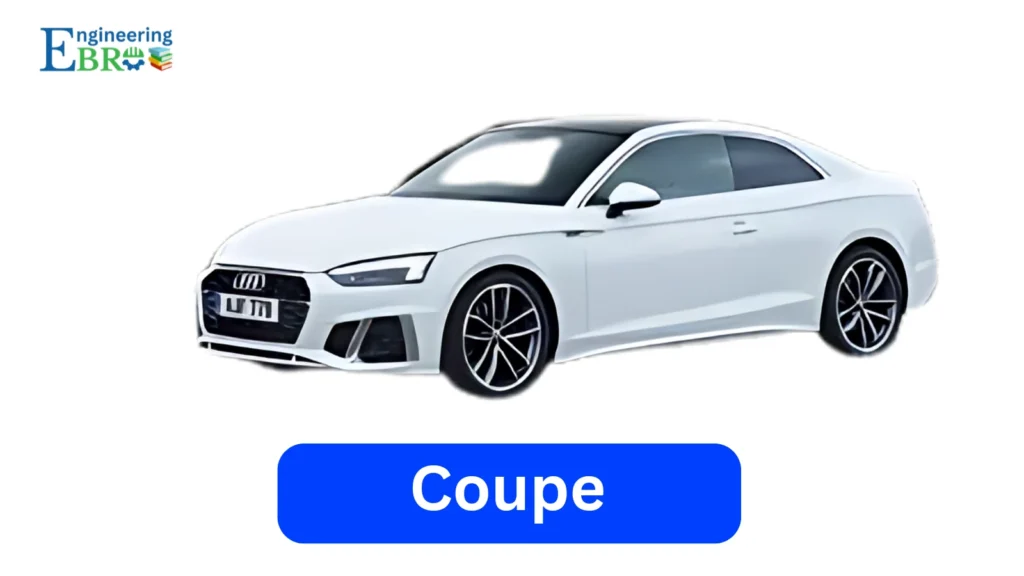
Overview
Coupes are two-door cars designed primarily for style and performance. They have a sloping roofline and sporty aesthetics. While not the most practical for families, coupes appeal to car enthusiasts and individuals who prioritize design and driving experience.
Key Features
- Two Doors: Sleek, sporty design.
- Performance Oriented: Strong engines and responsive handling.
- Compact Cabin: Usually seats 2–4 people.
- Aerodynamic Design: Enhances speed and fuel efficiency.
Advantages
- Sporty and attractive appearance.
- Fun to drive with responsive handling.
- Often comes with high-end features and technology.
Disadvantages
- Limited passenger and boot space.
- Less practical for daily family use.
- Higher cost compared to hatchbacks and sedans.
Popular Models in India
- BMW 4 Series Coupe: Luxury coupe with performance focus.
- Audi A5: Combines elegance with sportiness.
- Mercedes-Benz C-Class Coupe: Premium features and style.
6. Convertible
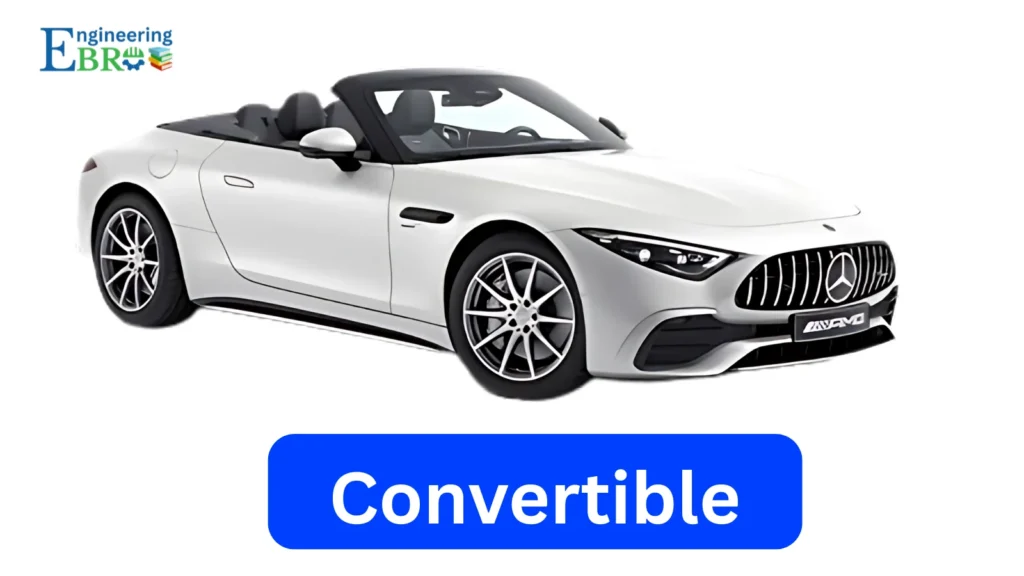
Overview
Convertibles are cars with a retractable roof, allowing drivers to experience open-air driving. These cars combine luxury, aesthetics, and fun driving. They are popular among enthusiasts who enjoy leisure drives rather than daily commuting.
Key Features
- Retractable Roof: Can be opened or closed depending on weather and preference.
- Luxury Interiors: High-end materials and comfort features.
- Sporty Design: Sleek and stylish bodywork.
Advantages
- Unique driving experience.
- Attractive design and luxury features.
- Ideal for scenic drives and leisure.
Disadvantages
- Less practical in extreme weather conditions.
- Limited boot and passenger space.
- Expensive compared to other car types.
Popular Models in India
- BMW Z4: Two-seater convertible with performance focus.
- Mercedes-Benz SL-Class: Luxury convertible with comfort features.
- Mini Cooper Convertible: Compact and stylish option.
7. Crossover
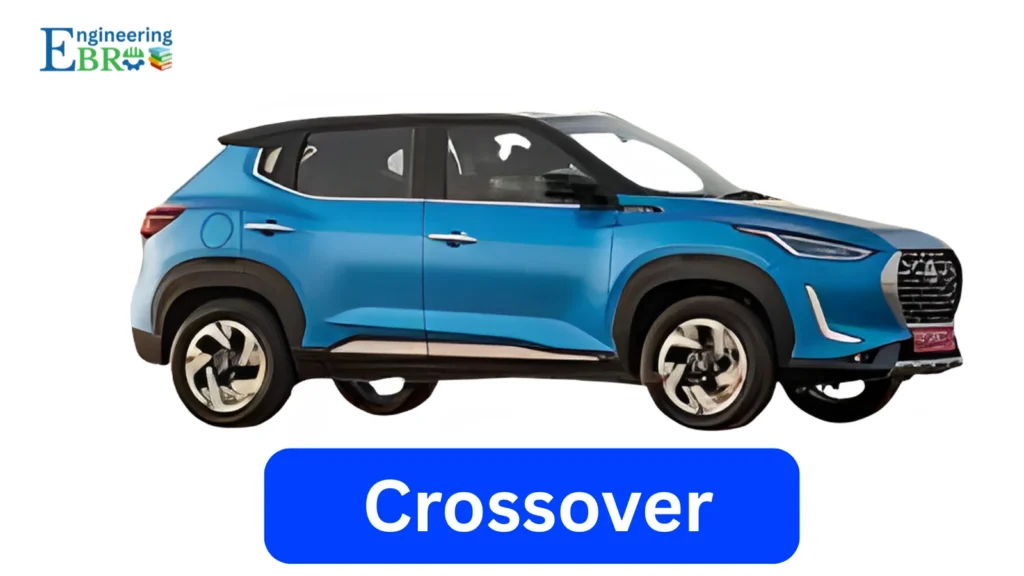
Overview
Crossovers are vehicles that blend features of SUVs and hatchbacks. They offer a high driving position, SUV-like styling, and compact dimensions suitable for urban environments. Crossovers are a growing segment in India due to their versatility and modern design.
Key Features
- Compact Size: Easier to drive and park in cities.
- High Ground Clearance: Some SUV-like benefits without the size.
- Fuel Efficient: Built on car platforms, so generally more economical than full-size SUVs.
- Modern Features: Often comes with infotainment, safety, and convenience tech.
Advantages
- Perfect for city driving and occasional long trips.
- Stylish appearance with SUV influence.
- Affordable compared to full-size SUVs.
Disadvantages
- Limited off-road capabilities.
- Less spacious than traditional SUVs.
- Can be expensive compared to hatchbacks.
Popular Models in India
- Hyundai Venue: Compact and tech-loaded crossover.
- Kia Sonet: Stylish design with modern features.
- Nissan Magnite: Affordable and feature-rich option.
Factors to Consider When Choosing a Car in India
Choosing the right car depends on several factors:
- Purpose of the Vehicle:
- City commuting → Hatchback or compact crossover.
- Family trips → Sedan, SUV, or MUV.
- Leisure and luxury → Coupe or convertible.
- Budget:
- Hatchbacks are budget-friendly.
- Sedans and crossovers are mid-range.
- Luxury coupes and convertibles are high-end.
- Fuel Efficiency:
- Hatchbacks and compact sedans are more fuel-efficient.
- SUVs and MUVs consume more fuel due to size and engine power.
- Maintenance and Resale Value:
- Popular brands like Maruti Suzuki and Hyundai have higher resale value and easier maintenance.
- Luxury cars have higher service costs.
- Road Conditions:
- SUVs and MUVs are suitable for rough or hilly terrains.
- Hatchbacks and crossovers are better for smooth urban roads.
Trends in the Indian Car Market (2025)
- Electric Vehicles (EVs):
- Growing popularity due to government incentives and rising fuel prices.
- EV hatchbacks and sedans like Tata Nexon EV and MG ZS EV are becoming mainstream.
- Connected Cars:
- Smart infotainment systems, GPS, AI-based driver assistance, and mobile connectivity are common in new cars.
- Hybrid Vehicles:
- Cars combining petrol/diesel and electric power to enhance efficiency and reduce emissions.
- Compact SUVs and Crossovers:
- High demand due to balance of space, style, and fuel efficiency.
FAQs – Types of cars in india 2025
Which type of car is best for daily city commuting?
Hatchbacks and compact crossovers are ideal for city commuting due to their compact size, fuel efficiency, and ease of parking in crowded areas.
What is the difference between an SUV and a crossover?
SUVs are built on larger platforms with higher ground clearance, powerful engines, and better off-road capabilities.
Crossovers combine SUV styling with hatchback practicality, offering higher seating but compact size and better fuel efficiency.
3. Are sedans still popular in India in 2025?
Yes, sedans remain popular among families and professionals who prefer a comfortable, premium driving experience. However, compact SUVs and crossovers are gaining more traction due to versatility.
4. Which car type is most budget-friendly?
Hatchbacks are the most affordable, both in terms of initial purchase price and long-term running costs like fuel, insurance, and maintenance.
5. Which car is best for long family trips?
SUVs and MUVs (MPVs) are best for long trips since they offer spacious interiors, higher seating capacity, and larger boot space for luggage.
6. Are coupes and convertibles practical in India?
Not really for daily use. Coupes and convertibles are niche, luxury choices suited to enthusiasts. They are expensive, have limited seating, and aren’t ideal for India’s mixed road and weather conditions.
7. What are the latest trends shaping the Indian car market?
Rise of electric vehicles (EVs) like Tata Nexon EV and MG ZS EV.
Connected car features like AI-based driver assistance, GPS, and smartphone integration.
Popularity of compact SUVs and crossovers for their balance of style and practicality.
Growing interest in hybrid cars that combine fuel and electric power.
8. Which car types offer the best resale value in India?
Hatchbacks and compact SUVs from popular brands like Maruti Suzuki, Hyundai, and Tata generally offer the best resale value due to high demand and easy maintenance.
9. How do I decide which car type suits me best?
Consider:
Purpose → City commute, long trips, or leisure driving.
Budget → Hatchbacks are affordable, SUVs mid-range, coupes/convertibles luxury.
Fuel Efficiency → Hatchbacks & compact sedans excel.
Road Conditions → SUVs & MUVs for rough terrains; hatchbacks & crossovers for smooth city roads
10. What are the disadvantages of owning a large SUV or MUV in India?
Higher fuel consumption.
Larger size makes parking and navigating congested city streets challenging.
Higher purchase and maintenance costs compared to smaller cars.
Conclusion
India’s car market in 2025 offers a wide range of options, from compact hatchbacks to luxurious convertibles. Each car type caters to specific needs, whether it’s city commuting, family travel, luxury driving, or adventure. Understanding the features, advantages, and disadvantages of each type helps buyers make informed decisions.
Hatchbacks remain the most practical choice for city driving, while SUVs and MUVs are ideal for families and long trips. Coupes and convertibles appeal to enthusiasts and those seeking style and performance. Crossovers provide a balance between urban convenience and SUV-like features.
By analyzing your budget, purpose, fuel efficiency, and personal preferences, you can choose a car that not only meets your needs but also enhances your driving experience. With evolving technologies, especially in electric and hybrid vehicles, the Indian car market is set to offer more innovation, comfort, and sustainability in the coming years
